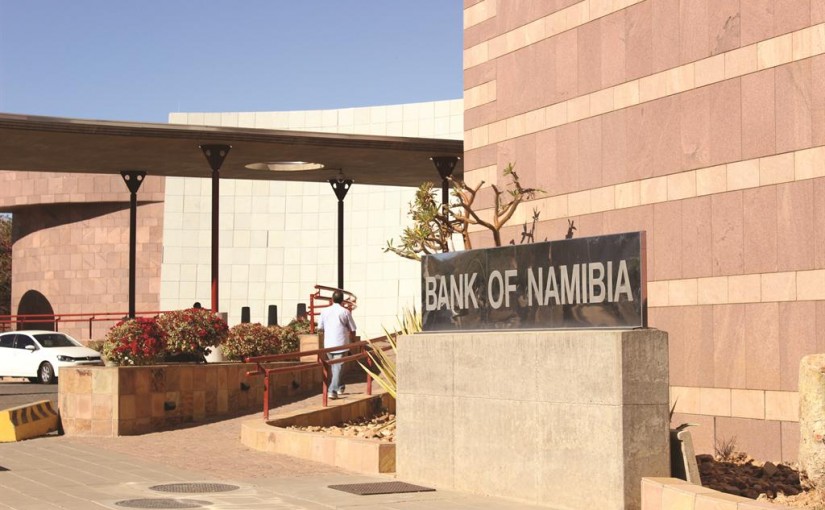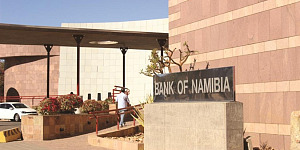Fitch Ratings has downgraded Namibia's Long-Term Foreign-Currency Issuer Default Rating (IDR) to 'BB-' from 'BB'. The Outlook is Stable.
A full list of rating actions is at the end of this rating action commentary.
Key Rating Drivers
The downgrade of Namibia's IDRs reflects the following key rating drivers and their relative weights:
HIGH
Elevated Fiscal Deficits: Modest growth prospects and a rigid expenditure profile will maintain high fiscal deficits relative to 'BB' peers. Fitch estimates the general government (GG) fiscal deficit widened to 9.5% of GDP in the fiscal year ending March 2022 (FY21/22, including 0.7% of GDP off-budget items not included in government numbers), above the estimated 'BB' median 5% deficit for 2021, from-8.2% in FY20/21. International financing conditions have tightened, which will lead to further increases in the government's interest bill (16% of revenues in FY21/22). Growth in tax revenues and a freeze on the public sector wage bill (55% of revenues in FY21/22) for the fourth consecutive year should support improvement in the GG primary balance in FY22/23, but Fitch expects the overall deficit to remain elevated at 7.6% of GDP, significantly above the current 4.8% 2022 deficit forecast for the 'BB' median, and also above the government's forecast of 5.6%.
High, Rising Debt: Fitch estimates GG debt rose to 68% of GDP at FY21/22, significantly above the estimated 55% of GDP 2021 'BB' median and 13pp above FY19/20, reflecting the pandemic-related recession and fiscal policy response. Despite fiscal consolidation efforts, we forecast that the rigid fiscal structure, rising interest costs and the gradual nature of the economic recovery will maintain government debt on an upward trend reaching 75% of GDP by FY24/25.
Weak Growth Prospects: The economy is estimated to have expanded by 2.4% in 2021, after contracting 7.9% in 2020. This compares with 'BB' median growth of 5.9% in 2021 after a contraction of 4.1% in 2020. Namibia's recovery was primarily driven by the mining sector, which in turn was supported by increased diamond, gold and uranium output. Fitch expects growth to increase to 2.8% in 2022 and 3.1% in 2023, supported by additional increases in mining production and continued recoveries in secondary and tertiary industries.
Nevertheless, the adverse impact from the war in Ukraine on global growth prospects and energy prices as well as tighter global financing conditions represent headwinds for the economy. Moreover, the gradual nature of the recovery, partly explained by structural constraints on growth, will result in real GDP not recovering to the pre-pandemic level until 2024 and contribute to the rising trajectory in GG debt levels.
Namibia's 'BB-' IDRs also reflect the following key rating drivers:
External Shocks: Namibia exports increased by 1.4% in 2021, with diamonds accounting for 19% of total exports, followed by uranium and fish at 15% each. Despite increased export volumes, Namibia registered a current account deficit (CAD) equivalent to 9.2% of GDP (current account balance of 2.6% in 2020), given a steep rise in the import bill for petroleum fuels and lower transfers from the Southern African Customs Union (SACU), a key source of fiscal and external revenue. In light of prolonged high oil prices, Fitch expects the CAD to widen further to 11.3% of GDP, more than triple the forecast 3.0% of GDP for the 'BB median' in 2022 before narrowing to 6.8% in 2023.
Adequate External Buffers: International reserves stood at USD2.7 billion as of end-May 2022, and we forecast reserves to cover 4.3 months of current external payments in 2022. We expect international reserve coverage to remain consistent with the sustainability of the peg of the Namibian dollar to the South African rand.
Inflationary Pressures: An increase in transport, housing and food prices led to an acceleration of inflation to 5.4% in May. Fitch expects average inflation to reach 6.1% in 2022 before easing to 4.6% in 2023. The rising cost of living could add pressure on the government to support low-income households, raising the risk of fiscal slippage.
NBFS Supports Financing Flexibility: Namibia's financing flexibility is underpinned by the well-developed non-bank financial sector (NBFS) with assets of about 120% of GDP, combined with regulatory requirements on domestic asset allocation and Namibia's access to South Africa's financial market. The large financing requirement in FY21/22 was mostly funded through domestic bond issuances, an increase in treasury bills outstanding and multilateral loans. In November 2021, the government repaid a maturing USD500 million Eurobond by drawing on its US dollar sinking fund (USD100 million) and a NAD6 billion (USD400 million) debt issuance to the Government Institutions Pension Fund.
Large Financing Requirements: The high fiscal deficit in FY22/23 and debt amortisations, including a maturing ZAR1.6 billion bond in November 2022 and the large stock of treasury bills as of March 2022 (17% of GDP, although unlikely to pose significant near-term roll-over risk), translate into large gross borrowing requirements (estimated at 25% of GDP). The government expects to fund this mostly through domestic issuances and multilateral loans. The sinking fund for the rand bond stood at ZAR1.8 billion as of March 2022. The increase in interest rates, coupled with the domestic market's saturation of government debt securities, will likely continue to put upward pressure on borrowing costs, in our view. The government's contingency funding plans include issuing under its Johannesburg Stock Exchange bond programme and bilateral loans.
Banking Sector Risks: The challenging macroeconomic environment since 2016 drove an increase in the banking sector's non-performing loans (NPL) before 2020 and the pandemic shock has dampened the banks' profitability and asset quality. The NPL ratio improved to 5.9% at end-February 2022 from 6.5% at end-2020, but remained higher than the pre-pandemic figure of 4.5% at end-2019. In addition, around 6.2% of banks' loans were still benefiting from payment holidays as of February 2022 (from an average of 7.5% since April 2020). Risks for macroeconomic and financial stability stem from strong balance-sheet interconnections between the banking sector and the NBFS, and the financial sector's exposure to domestic real estate.
ESG - Governance: Namibia has an ESG Relevance Score (RS) of '5[+]' for both Political Stability and Rights and for the Rule of Law, Institutional and Regulatory Quality and Control of Corruption. Theses scores reflect the high weight that the World Bank Governance Indicators (WBGI) have in our proprietary Sovereign Rating Model. Namibia has a medium WBGI ranking at the 61st percentile, reflecting a stable political environment, a moderate level of rights for participation in the political process, moderate institutional capacity, established rule of law and a moderate level of corruption.
Policy initiatives to address high inequality such as the National Equitable Economic Empowerment Bill and land reform have generated regulatory uncertainty. However, the government has a record of striving to maintain a private sector-friendly business environment.




































